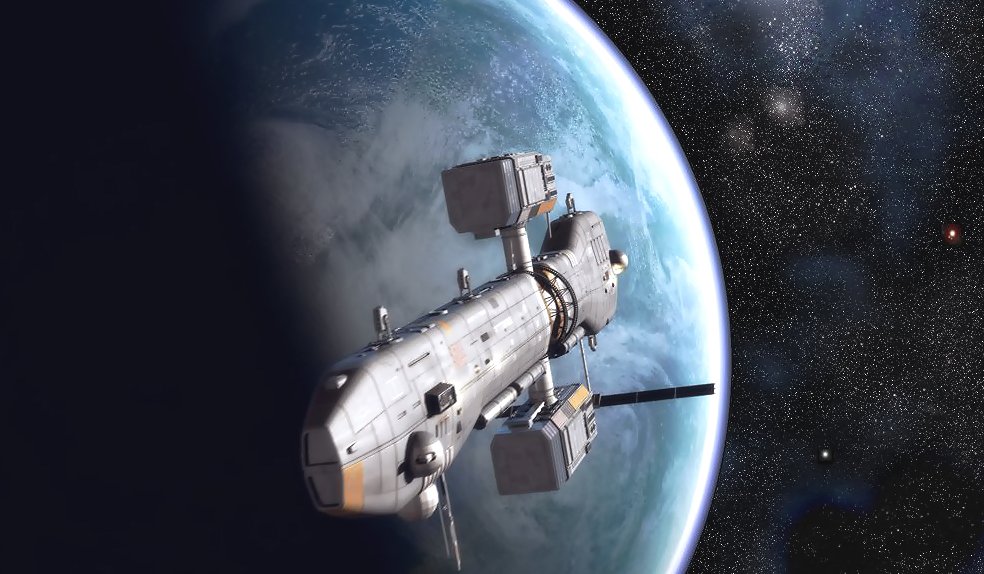
Arcturus Class
Colonial Destroyers

|
Introduction The Arcturus Class Colonial Destroyers are a new class of French warships designed with the lessons of the Kafer War foremost in mind. The Arcturus Class is intended to provide the backbone of system defence duties on the French Arm, replacing the outclassed and greatly depleted Aconits and other frigates whilst freeing more capable ships for offensive action.. Acknowledgements Artwork is by Laurent Esmiol. Narrative Antares waited with her customary patience on the edge of the BCB system, this week she was covering the approach vector from Dunkelheim. Her only other company on the outskirts of the system was the veteran privateer Le Roi David covering the other vector coming in from Grosshiddenhafen. The human defenders of BCB had long learned the value of early warning. Especially now that the multinational squadron had only a converted merchant as an operating base high in orbit above the shattered world of Nous Voila, slowing reaction times dramatically. Antares often shared this duty with her sister the Arcturus and sometimes patrolled to the two main neighbouring systems. However the main threat were Kafer raiders who could appear almost without warning and alarming randomness. No one quite knew if they were ships left over from Triumphant Destiny’s deep penetration into the system or if they were new ships slipping past the fleet at Aurore though the route into devastated Hochbaden. In the last major invasion the ESA’s small picket ships like the Aconit Class frigates had been smashed aside like so many children’s toys, laying the way open for the Kafers to ravage the human colonies. Now ships like the Antares were being brought into service, hoping to put up a much greater fight. Development History |
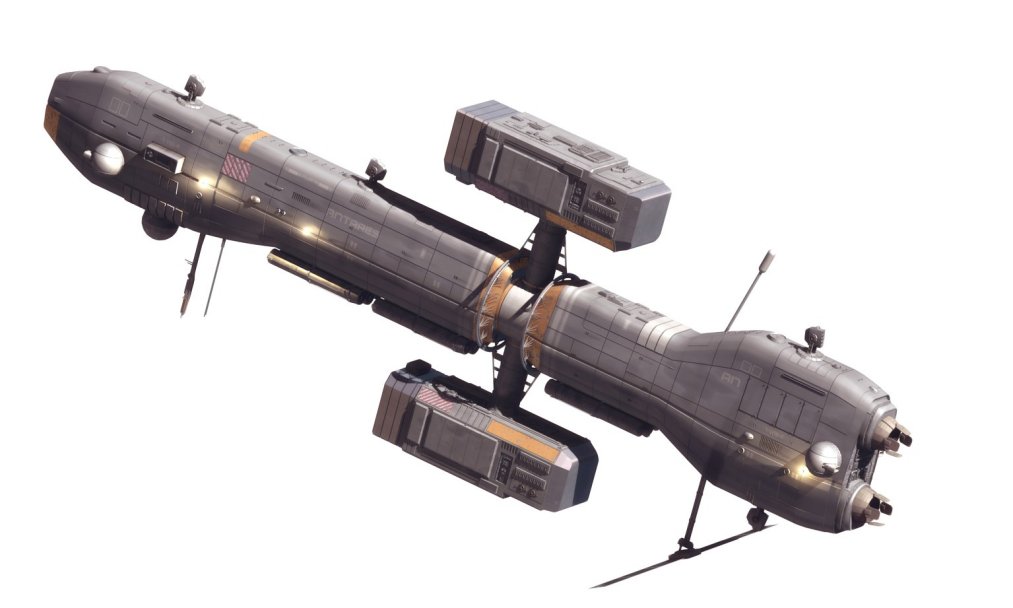
|
Above: Antares closed down for action with spin habitats fully retracted. (MSIF Media Ops.) The Arcturus Class was developed from a conceptual design developed as a commercial proposal by the team that developed the Soldat Class destroyers in the light of the casualty rate incurred by light frigates such as the Aconit Class in the early years of the Kafer War. The use of this type of frigate as colonial guardships was financially prudent and adequate for use as customs ships, piracy deterrence, flag showing and search and rescue duties. Unfortunately when facing Kafer heavy warships or fighter swarms they became easy casualties. The original design TD-115 was rejected by the MSIF who did not see the requirement for an expensive new guardship design. The Invasion however saw another massive round of casualties which fell heaviest on the frigates. In response the MSIF launched a crash program of ship building, and amongst this found the funding for an initial four TD-115s which were relatively easy and resource light to build. This was followed later by a further funding tranche. The TD-115s were designed to be operated in colonial systems with less than adequate resources allowing a long time between overhauls and using older technology to ease the difficulty of repair. The TD-115 is designed for a maximum of a three month deployment, this is much less than one of the longer ranged destroyers such as the Soldats or Paris Class but is more than adequate for its role. As a combatant the TD-115 matches the capability of the older generation of dedicated line of battle destroyers such as the CESAD, or ships like the American Cayuga-C and is significantly more capable than the lightweight Aconits. The ship is designed to operate in a three ship squadron based in a specific system, with two ships on patrol or stand-by and another preparing for operations. The initial concept was that this squadron would also regularly patrol nearby systems however tensions on the French Arm have meant that these ships have so far been concentrated on important chokepoint system. The ships train to fight independently in pairs making best use of their captain’s in-system knowledge to harass the enemy. If involved in a general fleet action they would act either as a flanking system utilising their missile armament, or in extremis, as a ‘goalkeeper’ for a larger ship. The ships are also fully capable of fulfilling all of the duties of the older Aconits, although are not capable of planetary landings and must carry a separate slung shuttle should they wish to undertake interface operations. The Arcturus class has four main design characteristics:
The bow which includes the bulk of the sensors, forward direct fire armament and the TAC as well as some recreational areas. The missile packs are slung beneath this section. The two spin habitats include the main living areas, galley and entertainment areas. The ship’s rudimentary med section is located in one of these areas although a sleeping quarter is taken over for use should a patient need to be bedded down. As has become standard in French designs these habitats are retractable for combat operations. The stern is included cargo and storage, primary engineering area and drive space and the secondary engineering area. Overall dimensions: Length 65m Tonnage 2,932 tonnes Armament The armament of the Arcturus-class is: 9 RITAGE-1D missiles in three slung missile packs with 4 remote pilots. 4 Guiscard LL-108 lasers (x 1+1) in masked turrets with UTES capability 4 LL-2 (5, 3x1) submunition dispensers Electronics Sensor systems are provided by DARLAN OPTO-PHYSIQUE while the targeting computer is part of the P-25Tbis integrated fighting system provided by ROCHARD and modified from the system in use on the Paris Class Destroyers. Active-Passive with one working station: DSAP S-2298. (Active: 10) Passive with one working station: DSMSP S-2230T (Passive: 10) Standard Navigation systems, Gravitational sensors, Deep system scanners. Engineering Systems Power Plant: ROUCHARD-LIGGET 25Mw fission reactor. Drive: ROUCHARD-LIGGET "Propulseur Jérôme" PJ-25M; 25MW old military stardrive. Crew The ships have a standard crew of 55 crew distributed as below: 12 in bridge. 10 in TAC 20 in engineering. 3 in troop bay. 1 steward. 2 in medical bay. The Arcturus is designed to be relatively comfortable for a ship of this kind. |
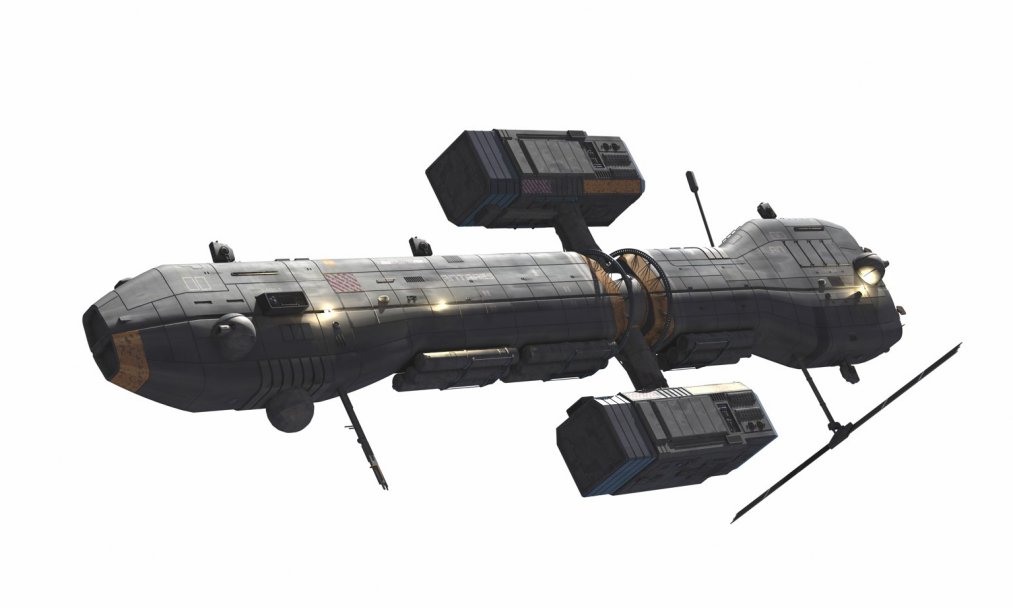
|
Above: A view of Antares clearly showing the Ritage-1D packs slung
under her hull. (MSIF Media Ops.)
So far there are five Arcturus Class ships in commissioned service Antares and Arcturus which have been deployed to the BCB system in part to prove the Antares concept. BCB has is still regarded as a hardship posting and has minimal in-system facilities for starships which is testing the Arcturus’ staying power. So far neither ship has seen action but both have been fully involved in fleet exercises and routine operations. Three further ships, Altaïr, Aldébaren and Archenar are in commission but are still undergoing work up in the core systems. It is thought that one will be deployed to BCB to bring the squadron there up to strength. The remaining two, possibly with a third so far uncommissioned ship will probably be deployed to Aurore. There are a further three ships on the slips and building. It is thought that a further batch of orders will be made once data from the Antares and Arcturus deployment at BCB has been studied and improvements included into the design. Whilst the class is currently only in French service the concept is being looked at by several other nations and may be exported. Vessels :
It should be noted that the in-service ships have a secondary number attached to their Hull Number ie -4. This is used to designate the ship’s assigned Division. |
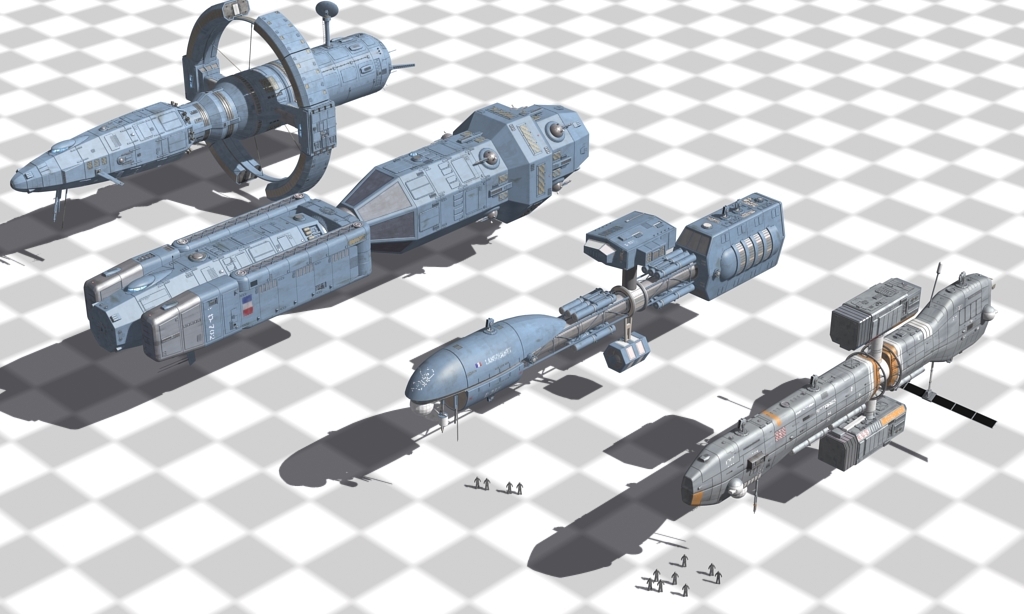
| Above: Graphic showing the current
in-service MSIF destroyer types. (MSIF Media Ops.)
Original Date of Design: 2302 Warp Efficiency: 3.34 (all power to engines), 3 (tactical systems powered up) Power Plant: 25 MW fission; Range: 7.7; Mass: 2932 tons; Cargo Capacity: 150 m3; Comfort: 0; Total Life Support: 55 people for 90 days; Ordnance Carried: 9 Ritage-1D missiles in 3 packs, 20 LL-2 submunitions (3x1) in 4 launchers; Crew: 55 (12 Bridge, 10 TAC, 20 Engineering, 1 Steward and 2 Medical. Capacity for 7 Passengers) Movement: 6 (7 with all power to drive); Targeting Computers: +1; Radiated Signature: 3 (6); Screens: None; Armour: 4; Radial Reflected: 5; Lateral Reflected: 6; Radial Profile: -1; Lateral Profile: 1; Hull Hits: 38/19/10; Power Plant Hits: 34/7 Surface Fixtures Weapons: 4 x LL-108 masked turrets (1x 1234, 1x 2345, 1x 6781, 1x 5678), all UTES equipped Critical Hits, Crew Section Bridge: Captain; 1 Navigator; Communications; Helm; Engineer; 1 Computer (often acting as secondary comm) Damage Control: 20 (5 teams) 10 off duty engineers giving (3 teams following NAM) 6 off duty bridge crewmen (2 additional teams) Price: MLv49, exclusive of ordnance |
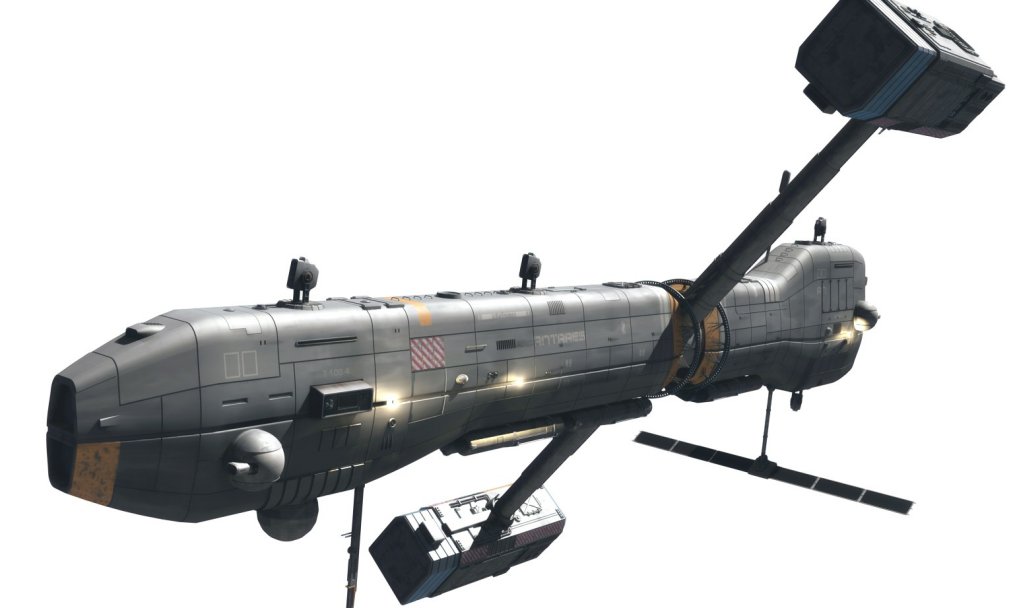
|
27 December 2006 Copyright Laurent Esmiol and D Hebditch, 2006 |